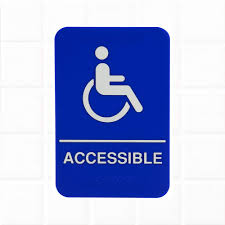
Everyone knows about ADA requirements. They may not know what the requirements are, but they know there are requirements. However, most designers and installers are unfamiliar with Section 504 requirements.
Section 504 refers to a section of the Rehabilitation Act of 1973. As the date suggests, it’s actually the precursor to the ADA. This section was one of the first civil rights laws that protected persons with disabilities from discrimination for reasons related to their disability. In other words, you can’t make the horse drink the water, but you have to give him an equal chance to drink it if he can’t get to it like the other horses. Sounds a lot like ADA, but it was narrower in scope and didn’t go into the details of how to provide that opportunity. In fact, it’s only applied to entities that receive federal financial assistance, whereas ADA is broadly applied regardless of federal funding.
Fire alarm application of ADA and Section 504 requirements are pretty similar. When dealing with residential units, it really depend on who’s occupying the specific units. ADA units are generally set up to be occupied solely by people with disabilities, so they get fire alarm audio/visual devices installed during construction/renovation and are move in ready. On a side note, the strobes have to activate when the local smoke alarm activates, so making the smoke detector a system device makes that easier to do. Section 504 are units that have to be provided in order to accommodate persons with specific disabilities as needed, so they’re generally set up with A/V pipe, wire & back boxes, as well as demonstrated capacity on the circuit to add any potential A/V devices needed. Technically, all that’s required is the capacity, but if they wait until the devices are needed, they have to install the conduit after the fact. Far better to have it waiting.
So from a life safety standpoint, ADA residential units are usually fitted with the extra fire alarm equipment needed to be ADA compliant without regard to any specific disability. Section 504 units generally are piped & wired to future requirements locations, should they be needed. They are then closed off with cover plates. The power source for these potential devices has to maintain the capability to add these devices as needed. ADA units can be Section 504 units and vice versa, but the required quantity of units set aside for this purpose is different, so you can have both to satisfy the percentage needed.
Obviously, there’s more to this than a blog can cover, so feel free to contact us for more information. Even better, be sure to contract with a firm like Affiliated Fire Systems that has a demonstrated knowledge of these requirements so there’s no scrambling at the end of a project. Along with state of the art Gamewell-FCI equipment, we’ll keep you ahead of the curve.
Gene Rowe, SET, NICET Level IV Fire Alarm Systems


Send us a Comment